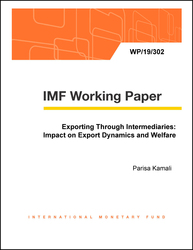
Exporting Through Intermediaries: Impact on Export Dynamics and Welfare
In many countries, a sizable share of international trade is carried out by intermediaries. While large firms tend to export to foreign markets directly, smaller firms typically export via intermediaries (indirect exporting). I document a set of facts that characterize the dynamic nature of indirect exporting using firm-level data from Vietnam and develop a dynamic trade model with both direct and indirect exporting modes and customer accumulation. The model is calibrated to match the dynamic moments of the data. The calibration yields fixed costs of indirect exporting that are less than a third of those of direct exporting, the variable costs of indirect exporting are twice higher, and demand for the indirectly exported products grows more slowly. Decomposing the gains from indirect and direct exporting, I find that 18 percent of the gains from trade in Vietnam are generated by indirect exporters. Finally, I demonstrate that a dynamic model that excludes the indirect exporting channel will overstate the welfare gains associated with trade liberalization by a factor of two.
Publication date: December 2019
ISBN: 9781513519876
$18.00
Add to Cart by clicking price of the language and format you'd like to purchase
Available Languages and Formats
| English |
Prices in red indicate formats that are not yet available but are forthcoming.
Topics covered in this book
This title contains information about the following subjects.
Click on a subject if you would like to see other titles with the same subjects.
Indirect exporting , direct exporting , customer accumulation , variable costs , bilateral trade liberalization , welfare gains , tari? revenues , Vietnam , , WP , welfare gain , foreign demand , variable cost , fixed cost , large firm
Also of interest
Summary
Copyright © 2010 - 2025
Powered by:
AIDC



